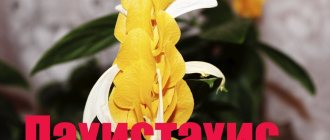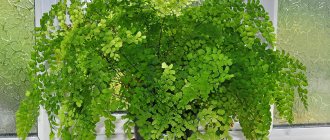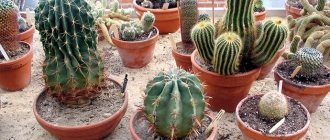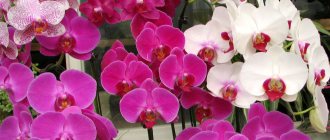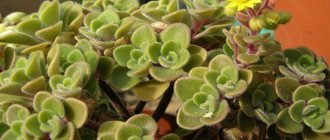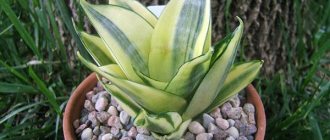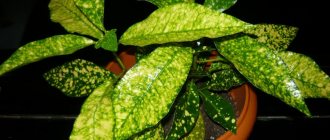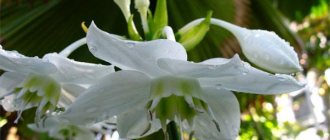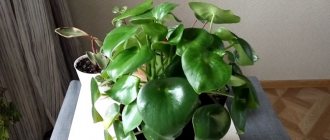Tillandsia is a large genus of unusual perennial, epiphytic plants, uniting about 650 species from the Bromeliad family.
The genus was first classified by the famous scientist and discoverer Charles Linnaeus back in the 18th century and named after the famous Finnish botanist and doctor of medicine Elias Tillands.
Many scientific articles have been written about tillandsia and many discoveries have been made, but to this day the mysterious plant has not revealed all its secrets.
Light
It is generally accepted that all air plants should have bright light with occasional direct sunlight. However, air plants can actually grow quite well in a wide range of lighting conditions.
The general rule for choosing lighting for growing at home is to focus on the natural color of tillandsia. The range starts from dark green to light green and then ends with almost white varieties.
Green types will do quite well in areas that don't receive much light on window sills. However, they do not like harsh direct sunlight.
Pro tip: All varieties do not tolerate dark areas well, so this should be avoided for long-term plant health.
If you have an air plant growing behind glass, such as in a terrarium, you absolutely should not place the container in direct sunlight. It doesn't matter what color your plant is - glass amplifies the sun's heat and creates excessively high temperatures.
Homeland and appearance
Under natural conditions, Tillandsia primarily grows in the southern part of the United States of America down to Chile. Tillandsia can be found in a wide variety of climate zones. It grows in the tropics, savannas, swampy areas, semi-deserts and even on the border of permafrost. This is why the external signs and growing conditions for different varieties of flowers vary so much.
Tillandsia combines epiphytic plants and terrestrial species. In this regard, the external diversity of the flower is very great. Under natural conditions, the plant is attached to the base - trees or stones using its root system. In this case, the feeding process occurs through the leaves. These types of tillandsia are considered epiphytes.
Some types of flowers have a stem, and some varieties have leaves collected in a rosette.
The leaf plates also differ. You can find plants with narrow and elongated gray leaves. The sheet width reaches 12 mm, and the length varies from 5 to 25 mm. The leaf blade may be covered with scales that absorb essential nutrients from the air. There are also species with dark green leaves, in some cases with a brownish or reddish tint. The length of the sheet plate reaches 40 mm.
The spike-shaped inflorescence is located in the center of the rosette of leaves, has an oval shape, and is surrounded by brightly colored bracts. The flowers are small in size, usually bluish or purple. The petals are pointed and slightly bent.
After flowering, the adult tillandsia slowly dies, but produces several daughter plants.
Watering
To avoid harm and to know how to water a flower, use two main methods of watering air plants. The first is to spray the leaves two to three times a week. This is very useful when your plant is fixed in place, such as attached to a wall. Air plants need regular misting or soaking in a water bath.
The second option is to dip the tillandsia flower in a container of water at room temperature. You will need to soak the plant in the container for half an hour or longer.
Soaking in this manner on a regular basis makes caring for these plants more difficult and takes much more time than is really necessary.
When soaking, it is important to shake off excess water and leave to allow the plant to dry completely before night falls and the temperature drops. If there is too much moisture around the plant and it becomes cold, there is a chance of rotting. Therefore, try to water in the morning rather than late in the evening.
3.Varieties:
3.1. Blue Tillandsia or cyanea - Tillandsia cyanea
A perennial herbaceous plant that forms a rosette of dark green, glossy, arched, narrow leaves up to 10 cm high. The leaves reach 30 - 40 cm in length, but only 1 - 2 cm in width. At the base, the leaves often have a burgundy tint. During the flowering period, the plant throws out a vertical leafless peduncle 5-8 cm high, which appears from the center of the leaf rosette. At the top of the peduncle, a large pink diamond is formed from bright bracts nested within each other. The bracts remain on the plant for two and a half months. The flowers are purple or lavender and appear between the bracts. Unfortunately, this plant is monocarpic, that is, once the peduncle is thrown away, the main rosette dies, leaving behind its daughter plants.
↑ Up,
3.2. Tillandsia usneoides, Louisiana moss or “old man’s beard” - Tillandsia usneoides
Evergreen atmospheric bromeliads that behave like epiphytes in nature. An interesting feature of this species is that plants absorb water and nutrients through special scales located on the leaves. The plant has thin stems, on which are alternately located slightly curved leaves from 2 to 6 cm long and only about 1 mm wide, often the leaves form long curved chains up to 6 m long. The entire plant is covered with miniature silvery scales. The flowers are very small, pale green, axillary, appear extremely rarely when grown at home, and have a rather pleasant aroma. When wet, plant leaves turn bright green. It is recommended to completely immerse this type of tillandsia at least once a week in warm water for 2 hours so that the plants are saturated with moisture. This species looks unusually beautiful when grown as an hanging plant in a hanging pot.
↑ Up,
3.3. Tillandsia xerographica
These evergreens grow in fairly dry areas of Mexico and Guatemala. In their natural habitat, they can behave as epiphytes or lithophytes. This species develops slowly and forms a leaf rosette with a height of 20 to 60 cm and a diameter of 50 to 90 cm. The leaves are oblong, triangular, curled, silver-gray or light green in color. The plant looks great when grown as a hanging plant, when the leaves are mixed through the edges of the pots in long, graceful curls. During the flowering period, tillandsia shoots out a short, strong pinkish peduncle from the middle of the rosette. At the top of the peduncle, pink-red or greenish-yellow bracts are formed. The flowers are tubular, red or purple, and the flowering period is very long. This species does not need high humidity so much, so in the warm season the bushes are simply dipped in warm water for a few minutes.
↑ Up,
3.4. Tillandsia “Jellyfish Head” - Tillandsia caput-medusae
Perennial evergreen atmospheric bromeliads that do not require soil to develop. The roots serve this species only for attachment to tree trunks. The plant forms a leaf rosette of juicy, fleshy, light green, gracefully curved leaves covered with silvery scales. The peduncles are low and also curved. At the top of the flower stalks there are bright salmon, pink or yellow bracts, and tubular purple flowers appear between them.
↑ Up,
3.5. Tillandsia ionantha or violet flower - Tillandsia ionantha
Widely grown in indoor culture are compact, evergreen, herbaceous plants that originate from Central and South America. They form leaf rosettes 15 to 30 cm high, consisting of arched green or silvery leaves. During the flowering period, the plants adorn themselves with short, strong peduncles, which have bright pink bracts at the top, between which lavender or purple tubular flowers appear. A composition of several plants collected in groups and grown, for example, on a piece of wood, looks gorgeous. This species does not require soaking in water, but the plants will benefit from simply dipping in warm water two to three times a week for a few minutes.
↑ Up,
3.6. Linden's Tillandsia - Tillandsia lindenii
Medium-sized epiphytic plants forming a leaf rosette of dark green, glossy leaves. The height of the leaf rosette is 30 - 50 cm, and the width is up to 40 cm. The leaves are narrow, linear, up to 40 cm long and about 1.5 cm wide, often with red or brown stripes at the base. In warm months, short, strong flower stalks appear in the center of the leaf rosette, on which bright, pink bracts emerge from each other. Violet, very attractive flowers with three rounded petals up to 5 cm in diameter appear between the flower beds. The flowering period is very long and can last up to 3 months. Unfortunately, the main leaf rosette blooms only once.
↑ Up,
3.7. Magnus Tillandsia - Tillandsia magnusiana
Evergreen miniature atmospheric bromeliad plants, forming a rosette with a diameter of up to 20 cm. The leaves are thin, rolled into a tube, covered with silvery scales. During the flowering period, a very short peduncle with long, soft pink bracts and tubular, long, lavender flowers appears in the center of the rosette.
↑ Up,
3.8. Silver Tillandsia - Tillandsia argentea
Evergreen atmospheric bromeliad plant, which is a leaf rosette with a diameter of only 8 cm. The leaves are straight, sometimes slightly curved, very thin, rolled into tubes, light green, and more often silvery, covered with scales. The peduncles are thin, leafless, from 8 to 15 cm long, bearing an inflorescence at the top - a loose spike. Each inflorescence bears 3 to 5 flowers in shades of blue or purple with closely fitting salmon or pink bracts.
↑ Up,
3.9. Tillandsia bulbosa
An epiphytic bromeliad atmospheric plant that develops thick, short stems resembling bulbs with age. This is one of the easiest tillandsias to care for, as the fleshy and thick stem contains some reserves of water and nutrients. The leaves are thin, gracefully curved, green. In the warmer months, the plants form short flower stalks with bright, also curved, pink bracts. Tubular long purple flowers appear between the bracts.
↑ Up,
3.10. Double-edged Tillandsia - Tillandsia anceps
Evergreen epiphytic plants with long, glossy, arched, thin leaves. The leaves are green, often with a burgundy tint at the base. Currently, varieties with purple leaves have been developed. The peduncles are short, crowned with large pink, white, sometimes greenish bracts, arranged in opposite pairs. The flowers are bright purple or white.
↑ Up,
3.11. Protruding Tillandsia - Tillandsia stricta
Beautiful evergreen perennial, epiphytic plants that develop short stems with age. The leaves are collected in a rosette, glossy, dark green, flat, long. Leaf rosettes are very compact and often do not exceed 10 cm in diameter. There are plants with silver and even almost black leaves. Sometimes at the beginning of summer, rosettes throw out one or even several peduncles, bearing bright pink bracts with lilac or purple flowers at the top. The flowers are short-lived, but the bracts can decorate the rosettes for 2.5 months.
↑ Up,
3.12.Tillandsia flabellata
Tillandsias have long, glossy green or purple, and sometimes light green, pinkish, scaly, arched leaves collected in a rosette. The peduncles are short, each rosette can bear many peduncles. At the top of the flower stalks, salmon, red or pink bracts form. The flowers are tubular, long, purple. Needs short soaking about once a week in the warm season.
↑ Up,
3.13.Tillandsia juncea
Attractive atmospheric evergreen epiphytic plants with very long and thin, silver-gray or green, glossy, slightly curved leaves, collected in a rosette. During the flowering period, each rosette is capable of producing several leafless, pink peduncles, on top of which there are small, pink bracts covered with silvery scales and bright lavender or purple, tubular flowers.
↑ Up,
Humidity
Tillandsia plants are dark to light green in color and generally need more frequent watering and higher humidity levels than gray plants.
If you can apply a mist or soak once or twice a week, you should be fine, and the humidity can be ignored in this case. However, if watering frequently causes you problems, then the compromise should be to keep the humidity fairly high.
Tillandsia atmospheric in the interior
Interest in these amazing plants has increased significantly in recent years. Atmospheric tillandsias are versatile in terms of design use. They are so unpretentious in this regard that they can grow on any surface provided the necessary humidity.
The plant below, at the base of the leaf rosette, has a stratum corneum that withstands contact with the glue. Using special silicone, the epiphyte can be glued to any surface, which is often used to create interesting compositions, for example, growing tillandsia upside down.
Growing on a tree
You can also attach the plant to a tree with aluminum wire, wrap it in coconut fiber around the bark, or glue it to a stone, giving the composition a natural look. You can also grow epiphyte in an empty coconut.
Mini-landscapes in glass using colored sand, moss, shells, glass beads, and decorative stones are popular.
Such a composition can consist of one or several plants. Mini-orchids complement tillandsia well in such landscapes.
These amazing epiphytes can also be grown in various types of terrariums or aquariums where the habitat conditions are more controlled.
Feeding
Feeding at least a few times a year is a good idea for indoor maintenance as it will give you strong, healthy plants in the long run. You can use special cactus or orchid food, or just regular houseplant fertilizer diluted by half (they don't need much).
The only catch is to avoid fertilizers containing boron, copper or zinc, as all three metals are toxic to most tillandsias.
The fertilizer can be applied to the leaves in a spray bottle or in a container of water if you are soaking the plant.
Diseases and pests
Tillandsia is resistant to various diseases and most known pests. The reasons for the death of the plant can be improper care and violation of standards during transplantation.
| Diseases and pests | Cause, symptoms and signs of the disease | Treatment and prevention |
| Rot and fungi | Reason: overmoistening of dense soil, infection during transplantation, or purchasing a diseased plant. | The affected parts of the plant are removed, and the cut sites are treated with fungicides or brilliant green. Adjustment of watering, replanting, treatment with Fundazol. |
| Violation of planting and care standards | Curling of leaf blades, death of stems and leaves. Reasons: dry air, lack of moisture. | Adjustment of care and elimination of causes. |
| Rotting of the rosette, brown leaves and shoots. Causes: Excessive watering of the plant, dense, airtight soil. | ||
| Light spots on leaves, general loss of color. Cause: Sunburn. | ||
| The leaves darken and stretch, the plant does not develop. Cause: Lack of sunlight or minerals. | ||
| Dropping of leaves, sudden change in color or wilting. Reason: Sharp drop in temperature, cold drafts. | ||
| Limescale deposits on leaves, shoots and peduncles. Reason: Spraying and watering with hard water. | ||
| Shchitovka | Convex brown growths form on leaves, stems and peduncles that cannot be removed with a fingernail. | At the initial stage, treating the plant with soap solutions or insecticides helps. When the lesion is advanced, the plant is thrown away, since treatment has practically no results. |
Temperature
When it comes to temperature requirements, these plants are happy with temperatures ranging from 10 C to 30 C. Some varieties can tolerate lower temperatures, but this is not ideal as it dramatically increases the likelihood of rotting.
Spreading
The air plant can be propagated by seeds, which it can produce at the end of its life cycle, but this usually only works if you have several air plants blooming at the same time so that they can pollinate each other.
In addition, there are special requirements for germination as well as for plant survival into adulthood.
Instead, it will be much easier if you skip all this and wait until the cuttings form at the base of the mother plant. You can leave them so that they form a nice clump, or instead, when they are almost a third smaller than the mother plant, you can carefully separate them and treat them as individual plants.
Reproduction
Over the past few years, tillandsias have been gaining increasing popularity among flower growers and interior decorators. In this regard, the issue of propagation of these plants is usually of great interest to people involved in their cultivation. Let's look at the best way to propagate tillandsia.
Side shoots
“Atmospheric plants” reproduce vegetatively, by separating young shoots, i.e., side shoots. This happens after flowering.
The sequence of steps is as follows:
- The shoot, which already has 4–6 leaves and small roots-tendrils, is carefully separated from the stem with a sharp knife.
- The cut site is treated with activated charcoal or charcoal for disinfection.
- The young shoot is attached to the future place of growth.
You need to be patient, as the growth process will not be fast. If you follow the rules of care, flowering should be expected after 2 years.
Video: propagation of atmospheric tillandsia by lateral shoots
Growing from seeds
Propagation by seeds at home is almost never practiced due to its complexity and cost. The soil for seeds should not be too coarse-grained, but not too small (it is very difficult to select the desired density), the air temperature in the room should be at least +25 ° C, and the lighting should be very good and constant. Despite compliance with all requirements, seedlings often die. In addition, you will have to wait about 5 years for flowering.
Did you know? There are societies of bromeliad lovers in the world that publish special reference books, the Journal
of the Bromeliad Society , send planting material and organize expeditions to tropical forests
-
to places where tillandsias grow wild.
Plant height
The variety available means height and width may vary slightly between plants. However, air plants are generally not large indoor plants, and they probably won't grow much larger than what you have when you first buy them.
Most Common Green Tillandsias
Tillandsia dyeriana
A very beautiful plant that is an epiphyte that has spectacular inflorescences. The bracts are colored deep red. Flowering occurs in summer. From the middle of the rosette grows a not very dense inflorescence, shaped like a spikelet and attached to a long petiole.
Blue Tillandsia (Tillandsia cyanea)
This plant can be purchased at almost every flower shop. The curved, narrow leaves are collected in a rosette, and they reach a length of 30 centimeters. At the base they are colored brownish-red. On the surface of the leaf there are many small scales that fit quite tightly to each other. Flowering occurs in summer. A dense ear of elliptical shape appears. The bracts are colored lilac or pink, and small flowers blooming along their edges are blue or pink. Flowers bloom gradually and begin from the top.
Flowers
The photo of tillandsia during flowering captivates with its beauty. But at the same time, it is often bittersweet. On the one hand, this shows that you raised and cared for him correctly and at a good level. On the other hand, it also marks the end of plant life.
It takes many years, but air plants only bloom once, and when they do, the mother plant begins to lose its vigor and deteriorates before dying.
During this die-off period, it will spend all its energy producing as many cuttings as possible for reproduction. Once they have grown to a decent size, they can be separated from the mother plant or left to form an attractive bush.
It all depends on the variety you have, but the flowers themselves can be very short-lived - just a day or so - or they can last a month or more. Despite this, they are often striking, sometimes looking alien-like, but still pleasing to the eye.
Trimming
The plant belongs to annuals and after the flowering period begins to dry out slowly. However, flower growers advise not to trim the peduncle.
After some time, children appear on it, when the young plants reach a height of 10 cm, you can do it in two ways:
- Carefully separate them from the mother bush and plant them in separate flowerpots;
- Leave it to grow on an adult shrub; soon the mother plant will dry out completely, and in return two full-fledged tillandsias will grow in the flowerpot, which in two years will delight you with bright flowers.
Are air plants poisonous?
The good news is that tillandsias are not poisonous to people or most pets such as cats and dogs. The bad news is that their unusual appearance can attract playful and curious pets.
Don't let your pets play with them as their delicate size can cause them to be easily damaged.
Use in design
The originality of epiphytes allows you to create very unusual compositions in any room. Tillandsias without roots can be grown directly on the wall or used as an anchor point using driftwood, rocks, artificial castles or arches covered with coconut fiber.
The unpretentiousness of exotic flowers allows you to use the most unusual pots for planting them. Tillandsias are often grown in aquariums, terrariums, glasses, coconuts and other containers.
Potted species also do not have high requirements, so planting and growing tillandsia at home is quite simple. Fantastic shapes of leaves and flower stalks will help decorate and diversify any corner of your apartment or office.
Features of placement
You can grow these plants anywhere. However, make sure that any container you place it in has free air flow, i.e. no closed bottles.
Also, if you want to hold it in place with wire, avoid superglue and wire containing copper. Both can cause severe damage or even kill the plant.
Botanical description
Tillandsia usneoide belongs to the Bromeliaceae (Latin Bromeliaceae) and is a herbaceous perennial plant. This type is considered the most common.
The plant has no roots, it hangs from poles and trees, forming a cascade of long shoots, on the surface of which gray leaves grow, the length reaches several meters.
Growth is cascading, ampelous in shape. Does not require special strengthening.
Flower care: summary
- Medium Light Level – This is an adaptable houseplant that can grow equally well in moderately lit or brightly lit spaces. Avoid prolonged storage in the shade.
- Moderate watering - Water well by misting several times a week, or by dipping the entire plant in a bowl of water.
- Temperature - They need a temperature between 10 C and 30 C.
- Feeding – Feed once every two to three months year round to keep the plant looking healthy. Add fertilizer to a bowl of water.
Home care
Tillandsia usneiformes does not need soil. Therefore, when looking for this plant, pay attention in flower shops not to pots, but to decorative compositions on a piece of bark, wood, or stone.
What pot
When grown indoors, these plants can be attached by the base of the rosette to pieces of bark, trellises, wooden blocks, or to special structures for epiphytes, which can be purchased in stores. For the same purpose, ring-sawn larch or cypress wood, beautiful, pre-well-washed roots and stones are suitable. Please note: it is very important to create comfortable conditions for the unhindered growth of shoots. The following materials can be used for fastening to the support:
- nylon threads;
- soft wire;
- waterproof instant glue, which is applied to a section of the stem and glues the plant to the bark or wooden block.
Treated wood coated with varnish or paint is not recommended for use in making the base. The same applies to gypsum fiber and polyurethane foam.
Soon the plant will secure itself on the support and begin to develop the territory. When placing tillandsia on a support, there is one more thing to consider. Periodically, the plant along with its support must be immersed in water. This means that you need to think about this in advance. To injure the flower less, secure it to a small block, which you then place on composite structures indoors.
Some gardeners find it helpful to wrap the rosette in sphagnum moss, which will help provide the extra moisture that atmospheric tillandsias need. If you do not plan to fix the flower on a support, use stones, which must first be washed well and then simply placed on top of the plant. All you have to do is wait until it gets a foothold on the rocks and starts sprouting.
An exotic guest can be placed in a beautiful flat vase or candy bowl, but make sure that moisture does not accumulate in the container. Excessive humidity can destroy the plant.
Temperature
Usnaea Tillandsia does not tolerate too high temperatures. Plants feel much more comfortable at a daytime summer temperature of about +25 °C, and at night it should not fall below +15 °C. From November to February, the optimal regime for these plants is in the range of +14...+18 °C.
Lighting
Atmospheric tillandsias are shade-tolerant and even shade-loving plants, but they also need sunlight. The most suitable places for them are near northwestern or eastern windows. In indoor floriculture they prefer partial shade, but in natural conditions they tolerate the sun of tropical forests well. This should be taken into account in winter and the compositions should be rearranged to lighter areas.
In winter, atmospheric tillandsias will require additional lighting to increase daylight hours to fourteen hours per day. For this you can use fluorescent lamps.
The plant does not like bright light; it is best to keep it in partial shade away from windows. This is especially true in winter, when spraying is necessary once every three days. You can completely switch to artificial lighting.
The soil
Tillandsia usneiformes loves light, well-permeable, neutral or slightly acidic soil. To be replanted as needed, when the bush becomes too voluminous or the roots begin to appear from the pot. The top layer of the substrate needs to be renewed annually; due to the poorly developed root system, in this case the pot needs to be wide, but not deep.
You can buy the soil at the store or prepare it yourself:
- crushed peat (2 parts);
- leaf humus (1 part);
- fern roots (1 part);
- sphagnum moss (1 part);
- pine bark (1 part).
Tillandsia usneiformes needs to be fertilized 3 times a month using flower fertilizers; the dosage should be reduced by four times compared to that indicated on the package. In this case, fertilizer for orchids can also be used; this can be a substrate or foliar feeding, i.e. spraying the leaves. Fertilizers should contain little copper; high concentrations may be toxic to bromeliads.
Air humidity
Since epiphytes absorb moisture and feed from the air, humidity levels are extremely important to them. It must be at least 75%. Every morning it is necessary to spray the plant with settled warm water. During flowering, try to prevent water from getting on the peduncle. It can be covered with a plastic bag during water procedures.
With the onset of the heating season, the air in our apartments becomes much drier. If you don't have a humidifier, you are unlikely to be able to maintain a constant high level of humidity by only spraying. As an option, you can consider purchasing a special florarium.
Flower growers often grow epiphytes in the bathroom, where comfortable conditions for development can be created for this plant. You can also use aquariums equipped with artificial lighting, as well as humidity and temperature controls. Tillandsias look impressive in flower displays and glass vases.
It should be understood that these exotic guests also need fresh air. They must receive it constantly, enjoy its circulation. Rooms in which tillandsias grow must be regularly ventilated. In summer, place flowers on the balcony or veranda. Unusual pets will really enjoy this walk. But try not to let the tender shoots get wet by the rain or ruffled by the cold wind. This culture also does not tolerate icy drafts, however, like any indoor plant.
Watering
Sometimes the rosette is wrapped in sphagnum moss to create additional moisture, which is so necessary for atmospheric tillandsia. If you are too lazy to attach the flower to the support, you can use ordinary stones, first washed well, of course. To grow tillandsia on stones, you just need to put the flower on top and wait until it attaches to the stones and sends out new young shoots.
You can also place your exotic guest in a flat, beautiful vase, bowl, or even a candy dish, just make sure that water does not accumulate in the container. Drain it on time. If the plant gets wet all the time, it will rot.
Another good way to grow atmospheric tillandsia is in a low flower pot filled with some fibrous material and pieces of tree bark. Make a small hole and place the epiphyte in it. For greater stability, tie the plant to the pot with a soft nylon bandage. After a few weeks, the flower itself will hold onto its support. In this type of cultivation, it is most convenient to maintain high soil moisture.
Growing problems
My flower is not growing - Unless the plant is very young, there is usually little to no growth and this is not a cause for concern. In fact, we'd go so far as to say that it's not a problem, and if your plant is healthy, just enjoy your little houseplant.
Brown Leaves – Large areas of leaves that have turned brown (not just the tips) are a sign of various types of damage or abuse. The leaves are quite small anyway, so some damage from home care is indeed common.
You can cut off the brown pieces. Make sure you cut at an angle rather than straight across so that what's left of the sheet blends in with the others.
Leaves are curling – When leaves suddenly curl or wrinkle, it means it urgently needs water. Leaf curling is a last-ditch effort to prevent water loss by reducing leaf surface area due to drafts and light.
To remedy this, water the plant well and consider a long soak in a bowl of water to hydrate the plant. The leaves should open completely within a few days.
What is the difference between green and gray tillandsias - There really isn't much difference. Although greener species have fewer trichomes (tiny structures on leaves that help the plant trap and absorb moisture and nutrients) than grayer air plants.
In terms of care requirements, greener plants will likely need more frequent watering and will do better in shadier areas and terrariums. While grayer types will benefit more from higher humidity areas and lighter areas in the home.
What should I do with my plant's roots - Most Tillandsia species are epiphytes, which simply means that they grow on the surface of another plant. To help them stay attached, they tend to grow superficial supporting roots that help them "hang on."
When air plants are grown indoors as houseplants, the roots last very little, so they can be trimmed or removed if they are not desired. However, there is equally nothing wrong with leaving the roots alone.
Is my plant turning brown and soft? - Both symptoms are a clear sign of plant rotting. Watering too frequently, doing it late in the evening when temperatures are cooler, or exposing it to very cold temperatures will all lead to the very real possibility of your plant dying.
Landing
Planting tillandsia is quite simple, the main thing is to comply with the requirements for growing atmospheric and potted species.
Choosing a pot
Exotic guests have practically no roots, so small, original pots, aquariums and other containers are suitable for planting them. For plants with shallow and not very developed roots, wide, but not deep pots are suitable. Containers for potted species should have holes at the bottom. If you plan to water the plants by spraying, you can plant them in pots without holes.
To plant epiphytes you will need not a pot, but a piece of bark, felt, sphagnum or coconut fiber. The plant will need a support point on which it can gain a foothold.
Soil composition
Light, airy and moisture-permeable soils are suitable for planting potted species. Some gardeners use ready-made mixtures for orchids, but it is better to prepare the soil yourself.
Soil composition:
- pine or fir bark of medium or fine fraction;
- clay granulate;
- coconut fiber, chips or soil;
- coal.
Plants should not be planted in heavy soil mixtures with a predominance of humus, peat, garden or deciduous soil. The layers will quickly compact and block the access of oxygen to the roots.
Epiphytes do not need soil, since these plants do not have a root, or it serves the function of fixation and not nutrition. A beautiful stone, a piece of bark, driftwood, coconut fiber or an ordinary wall is suitable as a support.
Sphagnum or coconut fiber is fixed to a smooth support. If the surface is rough, such as bark or coconut, then no additional layer is required. The plant develops well, and absorbs all the necessary nutrition with the help of leaf blades.
Transfer
Monocarpic tillandsias are replanted once after purchase. In the future, the plant is replanted only to change the location or according to indications. Transplantation of polycarpic crops is done once every 2–3 years.
Question to the expert
How long can you not replant tillandsia bought in a store?
After purchase, you must immediately replant the plant in suitable soil. Typically, in stores, flowers are planted in a peat mixture, and exotic-looking roots require light, breathable soil. Tillandsias are not replanted during the flowering phase. It is best to wait for the plant to bloom and form babies.
Recommended by topic
Echeveria Light-loving plants for home and garden Hibiscus
Atmospheric (gray) varieties are immediately attached to driftwood, felt, wooden blocks, and stones after purchase in the store. Some gardeners place epiphytes in glass glasses, unusual bottles or other shaped transparent containers.
Potted (green) varieties are transferred to mossy stones, driftwood, or transplanted into a mixture of small stones, coconut fiber, bark and clay granules. In normal soil, the tender roots of the tillandsia will rot and the plant will die.
After preparing the site, the plant is carefully removed from the old pot or disconnected from the temporary support. The flower is transferred to a new place and sprinkled with a little substrate. Epiphytes are secured to the support with a piece of soft tape, which is removed after the plant has grown.
